



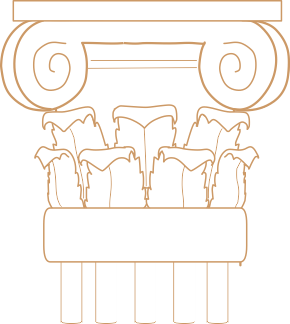
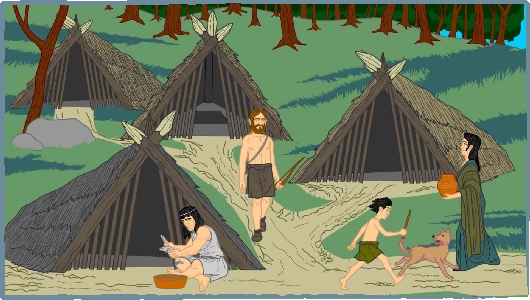 A settlement was created in ancient times beside the left bank of the River Sava. Archaeological research witnesses that the first inhabitants of this settlement were people of Starčevo group, and then, over the centuries, different cultures replaced one another.
A settlement was created in ancient times beside the left bank of the River Sava. Archaeological research witnesses that the first inhabitants of this settlement were people of Starčevo group, and then, over the centuries, different cultures replaced one another.
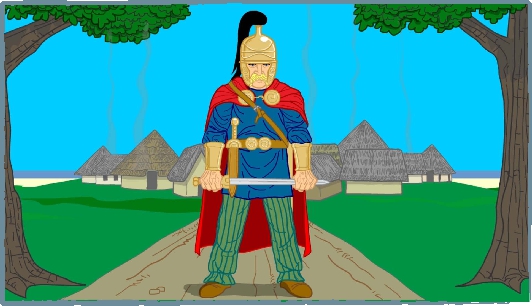 Sometime in the 4th century B.C. this settlement was mentioned under the name of Sirmium, possibly formed from after a Celtic or Tribal leader – Sim.
Sometime in the 4th century B.C. this settlement was mentioned under the name of Sirmium, possibly formed from after a Celtic or Tribal leader – Sim.
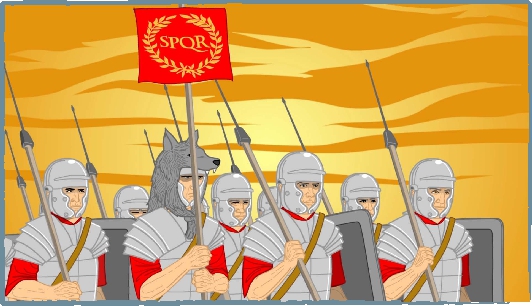 At the time preceding the birth of Christ, Roman legions marched into this area.
At the time preceding the birth of Christ, Roman legions marched into this area.
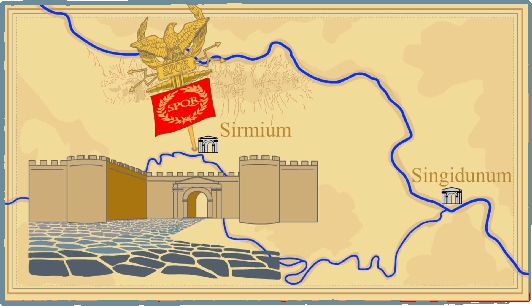 The town was soon to become an important strategic and communication centre.
The town was soon to become an important strategic and communication centre.
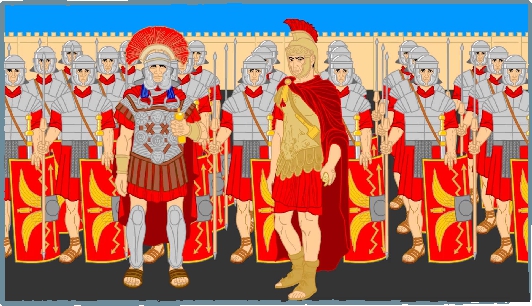 Many Roman rulers stayed in it preparing military campaign on the border...
Many Roman rulers stayed in it preparing military campaign on the border...
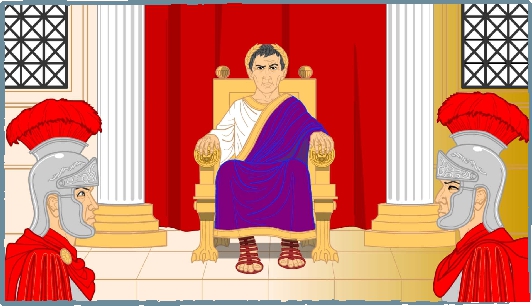 ... and the end of the 3rd century saw Sirmium become a place from which emperors ruled the large empire.
... and the end of the 3rd century saw Sirmium become a place from which emperors ruled the large empire.
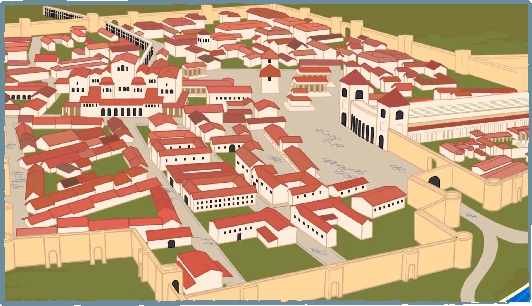 This is when the city got its magnificent appearance. The "glorious and densely populated mother of cities", as Sirmuium was called by the ancient writer Amianus Marcellinus, had...
This is when the city got its magnificent appearance. The "glorious and densely populated mother of cities", as Sirmuium was called by the ancient writer Amianus Marcellinus, had...
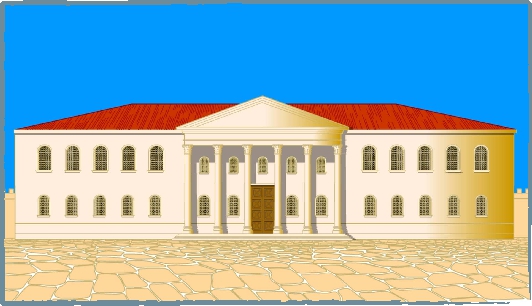 ...an imperial palace...
...an imperial palace...
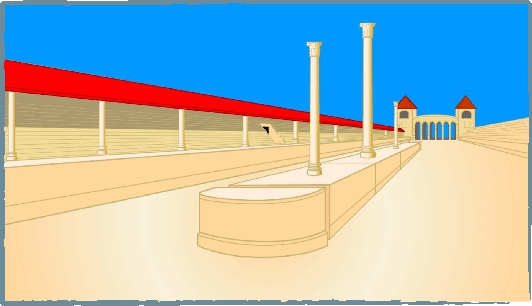 ...a hippodrome...
...a hippodrome...
 ...a mint...
...a mint...
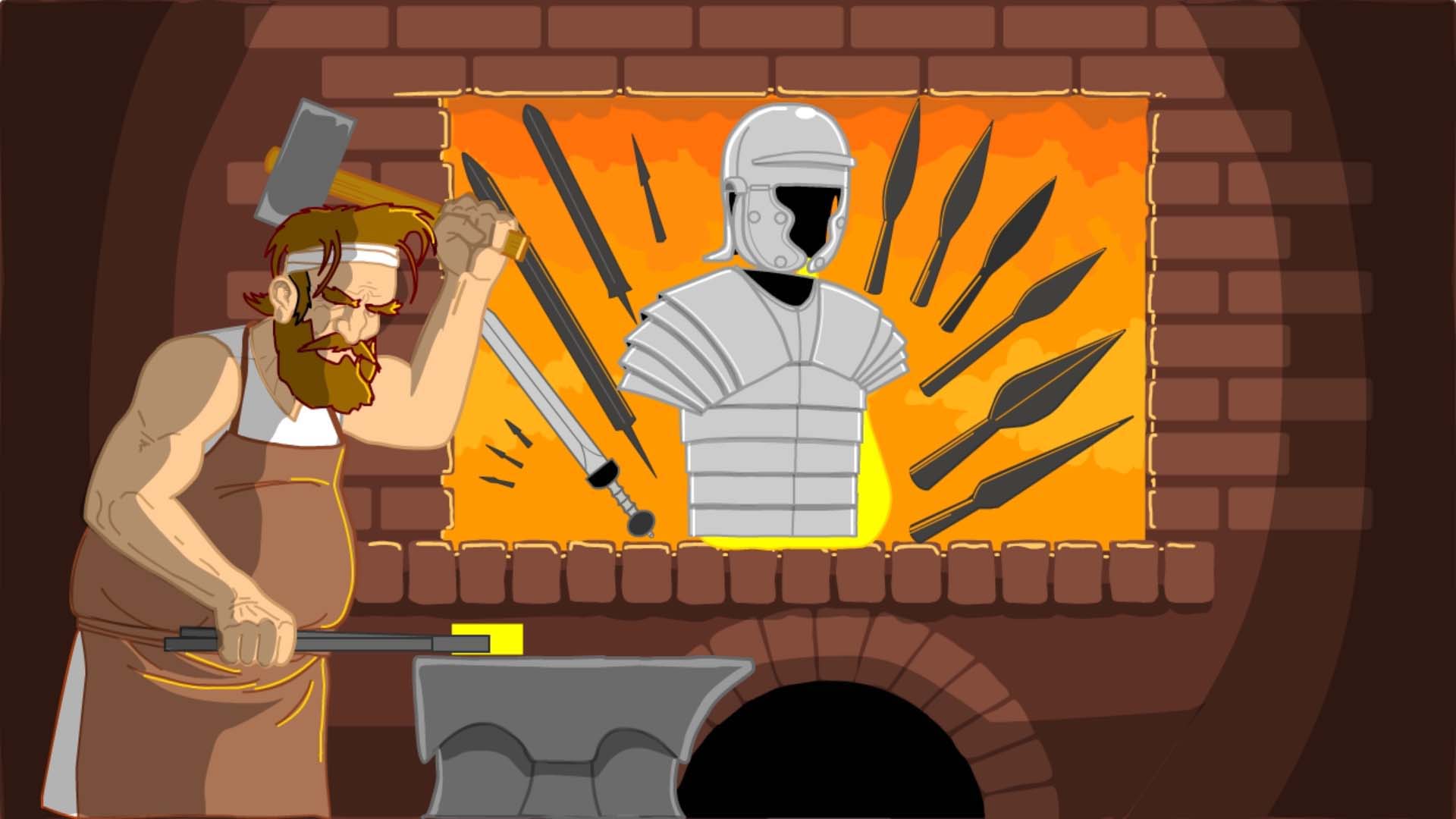 ...an armoury...
...an armoury...
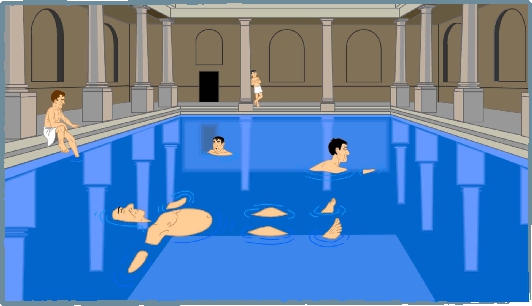 ...public baths, and many other significant buildings...
...public baths, and many other significant buildings...
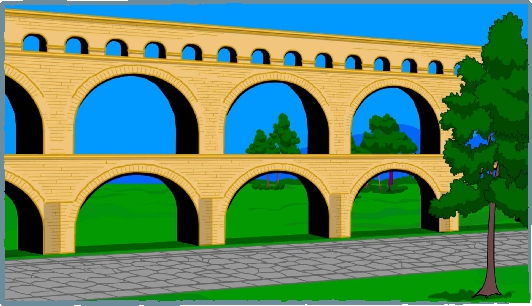 ...and water was supplied by a 14-km long aqueduct leading from the slopes of Mt Fruška Gora to the town.
...and water was supplied by a 14-km long aqueduct leading from the slopes of Mt Fruška Gora to the town.
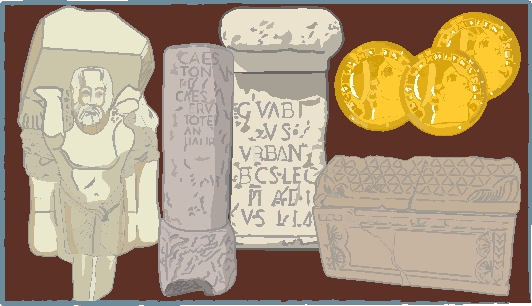 Marble statues, sarcophagi, milestones, altars, money...
Marble statues, sarcophagi, milestones, altars, money...
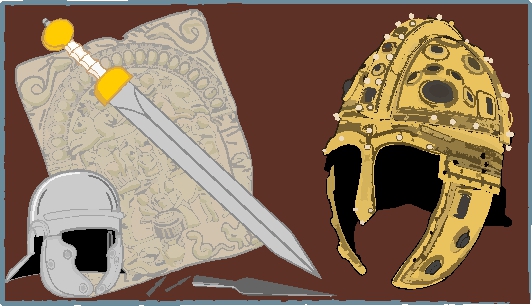 ...lead statuettes of Danube basin horsemen, remains of military equipment, famous helmets from Berkasovo and Jarak...
...lead statuettes of Danube basin horsemen, remains of military equipment, famous helmets from Berkasovo and Jarak...
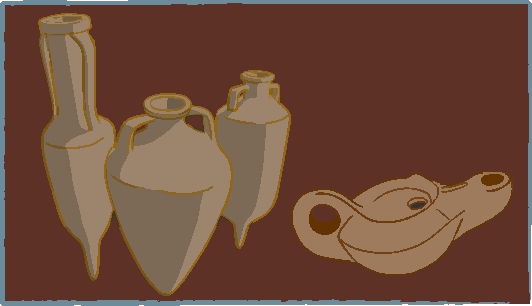 ...amphorae, miscellaneous small objects...
...amphorae, miscellaneous small objects...
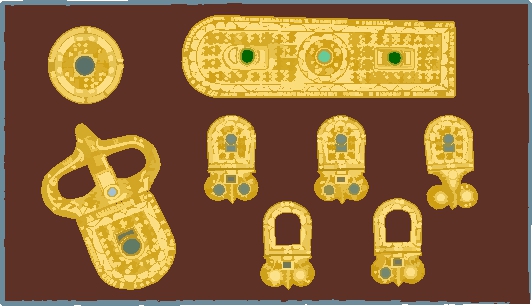 ...magnificent and unique Avar belt are the finds witnessing of the he wealth of a town.
...magnificent and unique Avar belt are the finds witnessing of the he wealth of a town.
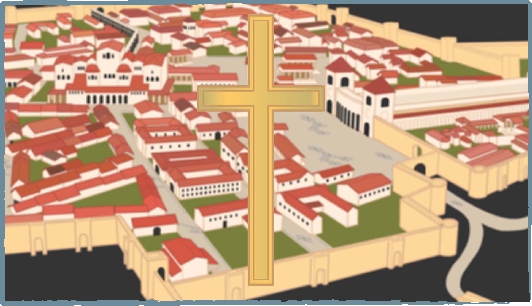 Sirmium was also the seat of one of the significant early Christian communities and is known for its many saints.
Sirmium was also the seat of one of the significant early Christian communities and is known for its many saints.
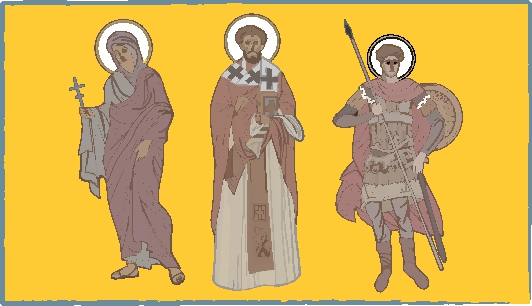 This is where St Sinerot, St Anastasia, St Irenaeus, St Demetrius...
This is where St Sinerot, St Anastasia, St Irenaeus, St Demetrius...
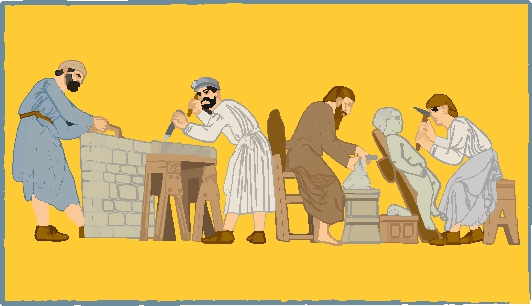 ...four Sirmium stonecutters and many others found their martyrdom for Christ.
...four Sirmium stonecutters and many others found their martyrdom for Christ.
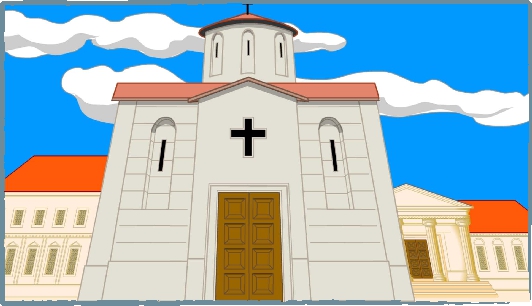 After the adoption of Christianity churches were erected in their memory...
After the adoption of Christianity churches were erected in their memory...
 ...and their graves become places where the faithful gathered.
...and their graves become places where the faithful gathered.
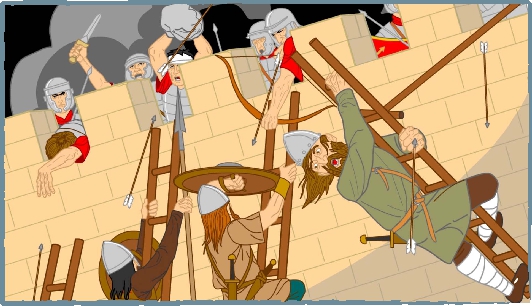 At the time of the crisis of the Empire and the Great Migration, the town was demolished on two occasions.
At the time of the crisis of the Empire and the Great Migration, the town was demolished on two occasions.
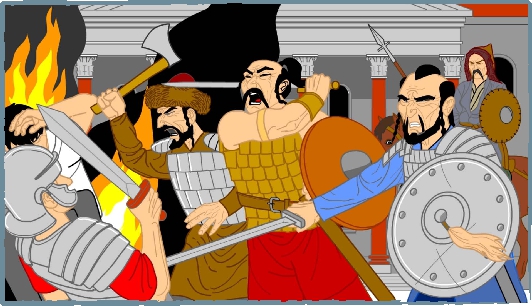 They were first demolished by the Huns in 441...
They were first demolished by the Huns in 441...
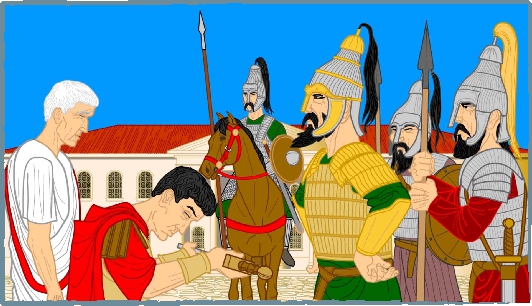 ...and then by the Avars in 582.
...and then by the Avars in 582.
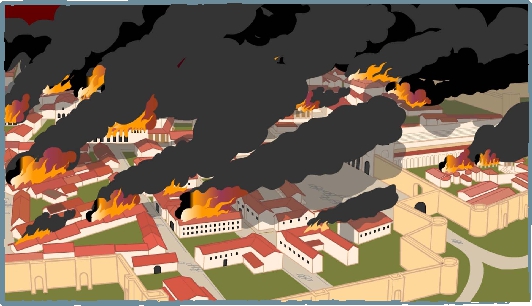 The year following the demolition of the town by the Avars, there was a great fire. This was the end of the ancient Sirmium.
The year following the demolition of the town by the Avars, there was a great fire. This was the end of the ancient Sirmium.
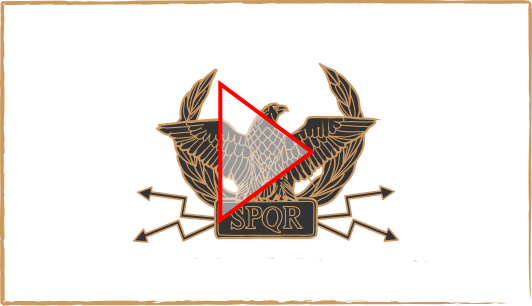

 About seventeen Roman emperors are deemed to have been born in the area of modern Serbia, and as many as ten of them were born in Sirmium or its closer vicinity.
About seventeen Roman emperors are deemed to have been born in the area of modern Serbia, and as many as ten of them were born in Sirmium or its closer vicinity.
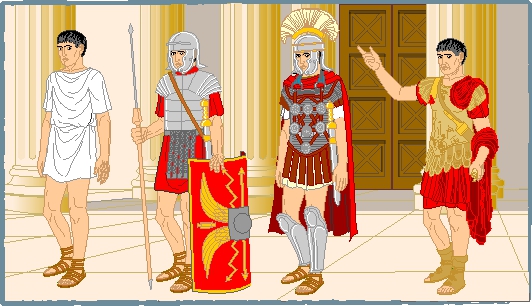 Most of them originated from common people, and climbed to the highest position in the state owing their capability and military service.
Most of them originated from common people, and climbed to the highest position in the state owing their capability and military service.
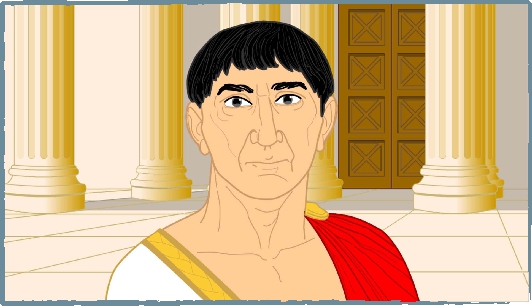 The first of “the Sons of Fortune” from this area, as these military emperors were called, was Traianus Decius (who ruled from 249 to 250), born in Budalia outside Sirmium, most probably modern Martinci.
The first of “the Sons of Fortune” from this area, as these military emperors were called, was Traianus Decius (who ruled from 249 to 250), born in Budalia outside Sirmium, most probably modern Martinci.
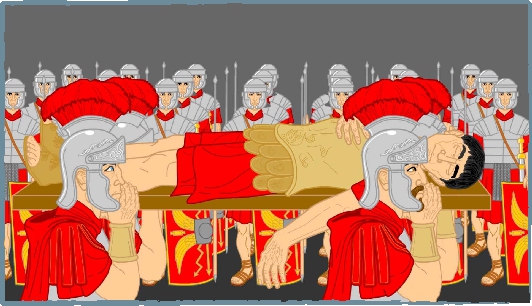 Traianus Decius was the first Roman emperor to die in battle against barbarians.
Traianus Decius was the first Roman emperor to die in battle against barbarians.
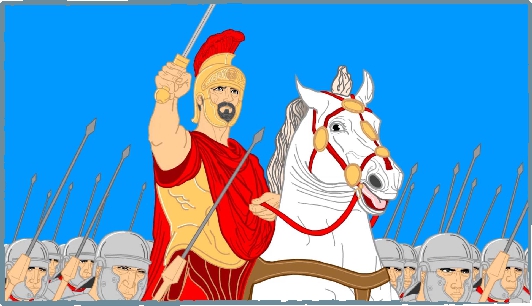 Aurelianus (who ruled from 270 to 275) was born near Sirmium. This ruler gained glory by his military accomplishments, often fighting in the first ranks.
Aurelianus (who ruled from 270 to 275) was born near Sirmium. This ruler gained glory by his military accomplishments, often fighting in the first ranks.
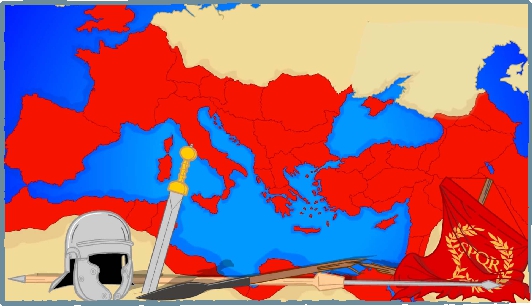 Having unified the Empire and pacified the borders after a long time of various civil unrests...
Having unified the Empire and pacified the borders after a long time of various civil unrests...
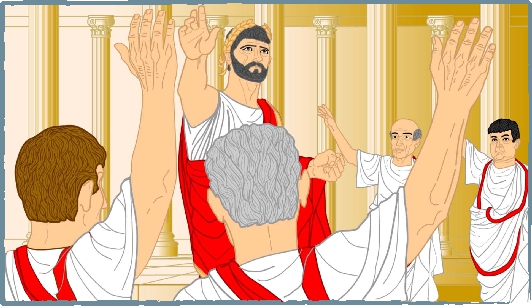 ...he was bestowed the title of Restitutor Orbits (Restitutor of the World).
...he was bestowed the title of Restitutor Orbits (Restitutor of the World).
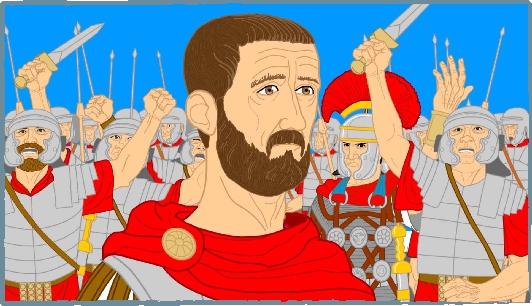 After Aurelianus’ death, the proclaimed his fellow citizen and friend, Probus (who ruled from 276 to 282).
After Aurelianus’ death, the proclaimed his fellow citizen and friend, Probus (who ruled from 276 to 282).
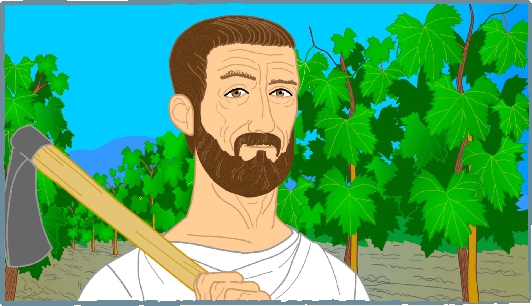 He is most probably one of the most famous emperors born in this town. In addition to numerous merits for the Empire itself, he is remembered by the fact that he abolished the prohibition of growing grapes outside the Appenine Peninsula, and planted the first vines on Mt Fruška Gora with his own hands.
He is most probably one of the most famous emperors born in this town. In addition to numerous merits for the Empire itself, he is remembered by the fact that he abolished the prohibition of growing grapes outside the Appenine Peninsula, and planted the first vines on Mt Fruška Gora with his own hands.
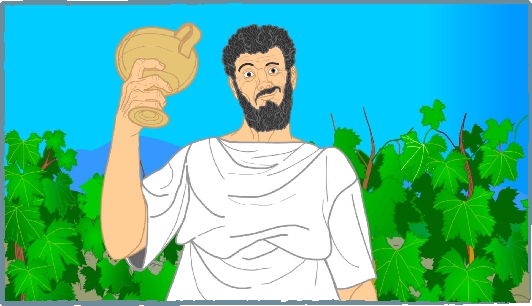 Vine growers and winemakers are grateful to him.
Vine growers and winemakers are grateful to him.
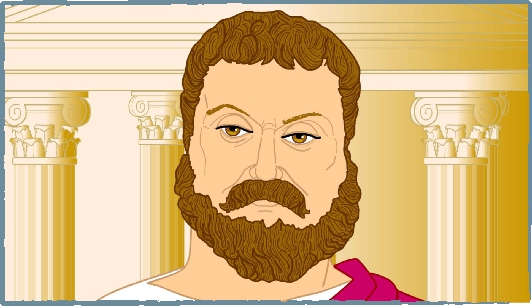 Maximianus Herculius (286-305, 306-308, 310) was also born in this town.
Maximianus Herculius (286-305, 306-308, 310) was also born in this town.
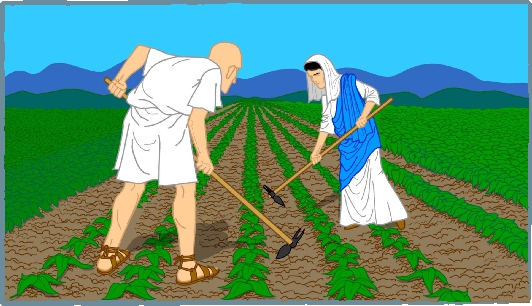 His parents were common day labourers, so that Maximianus...
His parents were common day labourers, so that Maximianus...
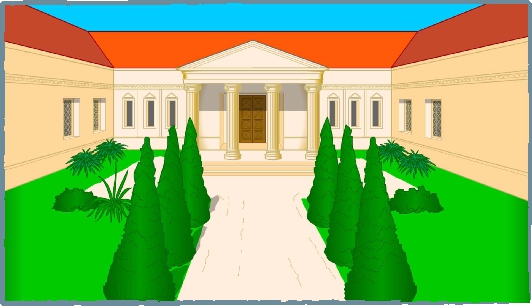 ...had an imperial palace, or villa built in their honour on the estate where they had worked, outside the town.
...had an imperial palace, or villa built in their honour on the estate where they had worked, outside the town.
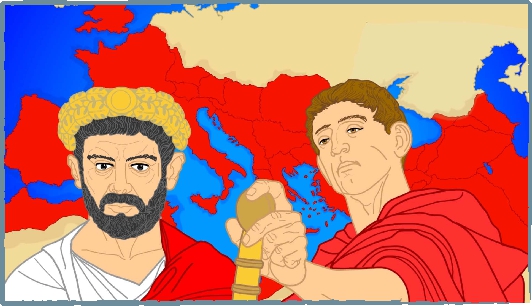 Some of the most important rulers of the Roman Empire, such as Diocletian or Constantine, spent lengthy periods of time in our town. Their decision influenced not only the life of the Roman Empire, but the entire human race as well.
Some of the most important rulers of the Roman Empire, such as Diocletian or Constantine, spent lengthy periods of time in our town. Their decision influenced not only the life of the Roman Empire, but the entire human race as well.
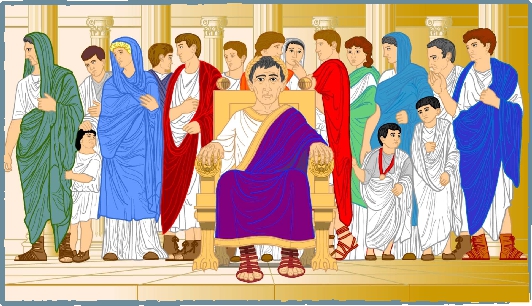 The presence of the emperor, his family and suite required appropriate accommodation.
The presence of the emperor, his family and suite required appropriate accommodation.
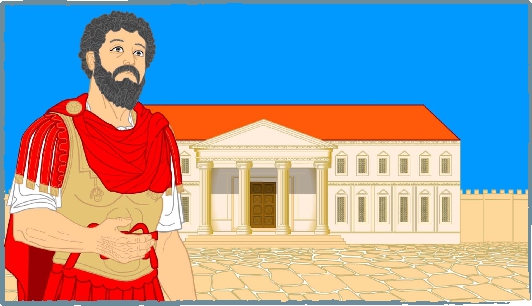 The imperial palace was first mentioned at the time of Emperor Marcus Aurelius (2nd century AD), at the time of the greatest development of the city, it was certainly enlarged, or a new one may have been build.
The imperial palace was first mentioned at the time of Emperor Marcus Aurelius (2nd century AD), at the time of the greatest development of the city, it was certainly enlarged, or a new one may have been build.
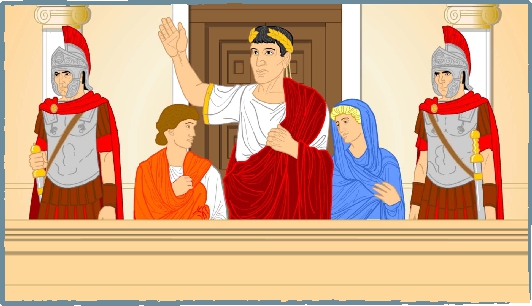 A hippodrome was built next to the palace. This is where the emperor addressed people...
A hippodrome was built next to the palace. This is where the emperor addressed people...
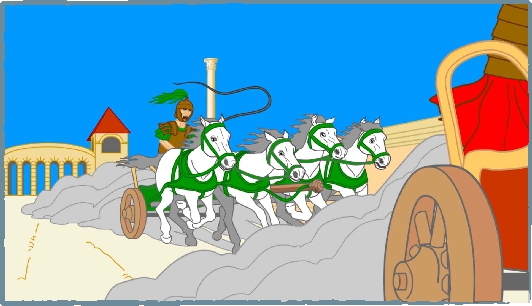 ...which was followed by chariot races.
...which was followed by chariot races.
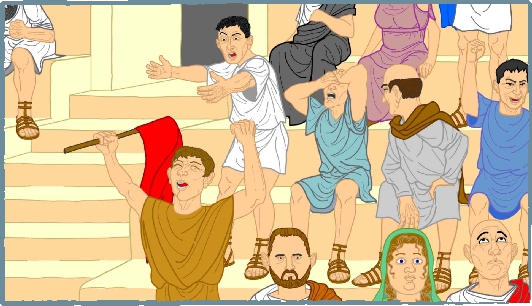 This was the favourite entertainment in the whole roman world, but only a privileged few had the opportunity to watch them, as hippodromes were practically built where the rulers of the state lived.
This was the favourite entertainment in the whole roman world, but only a privileged few had the opportunity to watch them, as hippodromes were practically built where the rulers of the state lived.
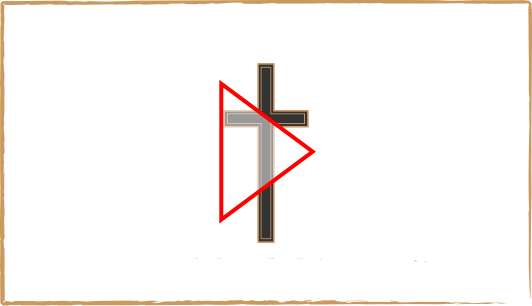

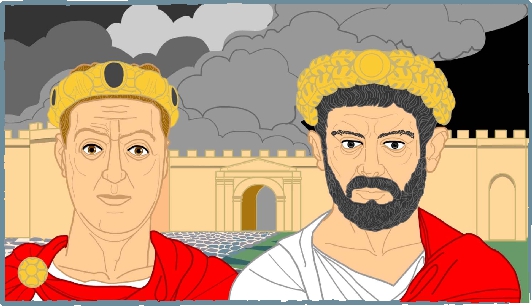 In the 4th century, at the time of emperors Galerius and Diocletian...
In the 4th century, at the time of emperors Galerius and Diocletian...
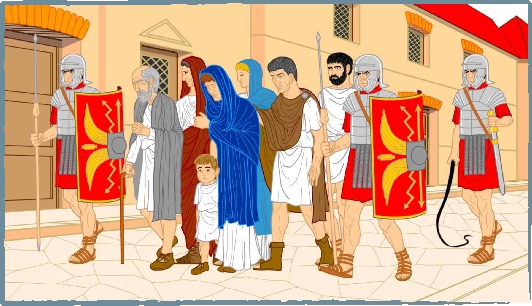 ...Sirmium became the site of violent persecution of Christians. A whole range of martyrs comes to the stage in front of us from the dark of the past These holy people imbued Sirmium with their blood, so that the soil on which modern citizens of this town is really holy.
...Sirmium became the site of violent persecution of Christians. A whole range of martyrs comes to the stage in front of us from the dark of the past These holy people imbued Sirmium with their blood, so that the soil on which modern citizens of this town is really holy.
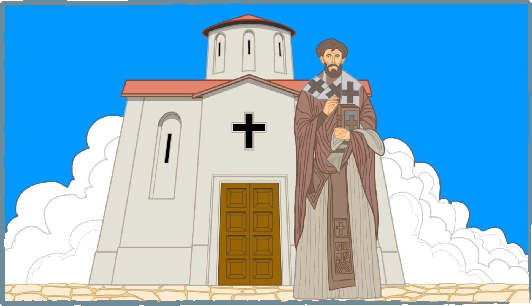 The Sirmium church was led by Irenaeus.
The Sirmium church was led by Irenaeus.
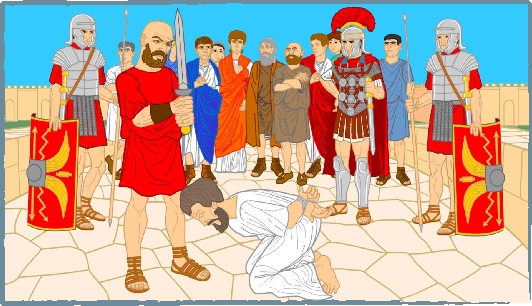 He was executed on one of the bridges connecting the town with the other bank of the river Sava. He awaited the descent of the sabre on to his holy head in peace and prayer.
He was executed on one of the bridges connecting the town with the other bank of the river Sava. He awaited the descent of the sabre on to his holy head in peace and prayer.
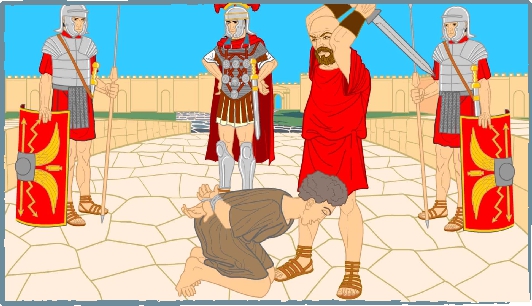 A few days later, the same sabre executed his deacon Demetrios, whose name the town bears nowadays.
A few days later, the same sabre executed his deacon Demetrios, whose name the town bears nowadays.
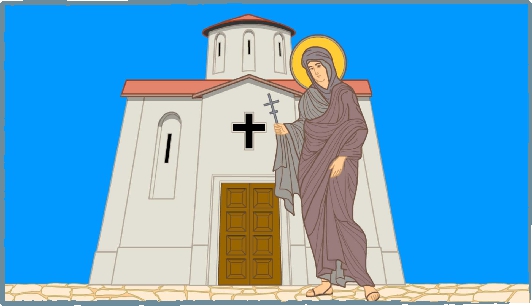 St Anastasia is a saint highly revered all over the Christian world...
St Anastasia is a saint highly revered all over the Christian world...
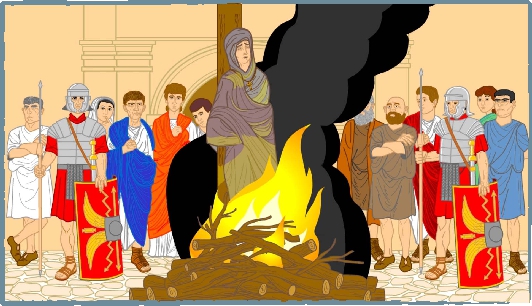 ...who ended her life on the stake in Sirmium...
...who ended her life on the stake in Sirmium...
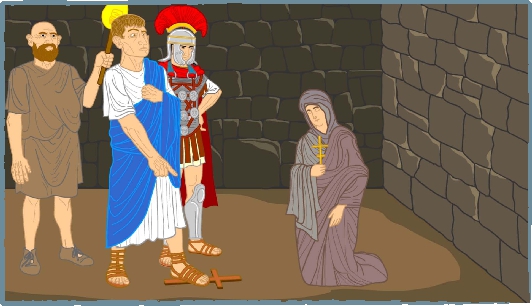 ...having admitted that she was a Christian and refusing to abandon her faith.
...having admitted that she was a Christian and refusing to abandon her faith.
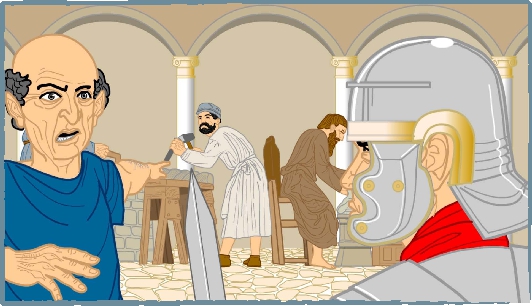 With the help of God, the holy stonecutters of Sirmium managed to carve everything that the emperor required from them. ...
With the help of God, the holy stonecutters of Sirmium managed to carve everything that the emperor required from them. ...
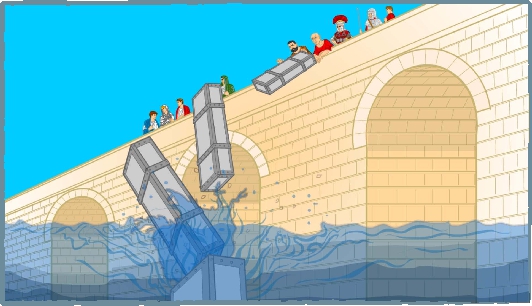 ...hey were thrown into the Sava, sealed alive in lead coffins.
...hey were thrown into the Sava, sealed alive in lead coffins.
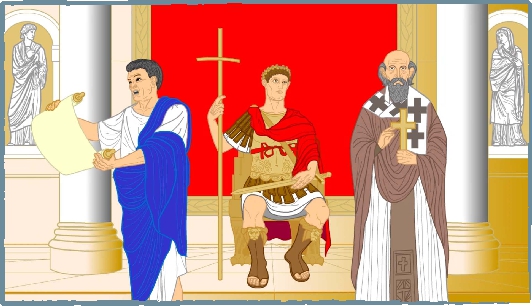 Sirmium was also the place that hosted Constantine, the emperor who allowed preaching Christianity in his decree, and also participated in organising church as an institution.
Sirmium was also the place that hosted Constantine, the emperor who allowed preaching Christianity in his decree, and also participated in organising church as an institution.
 At the time of his son Constantius II, who was born in Sirmium and ruled from 337 to 361, a few church councils significant for the whole empire were held in the town.
At the time of his son Constantius II, who was born in Sirmium and ruled from 337 to 361, a few church councils significant for the whole empire were held in the town.
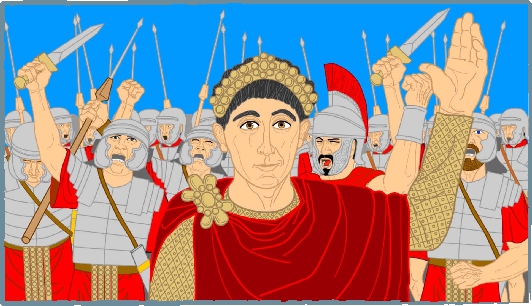 Sirmium was also the place of coronation of Theodosius I, the ruler who proclaimed Christianity to be the only faith of the Empire.
Sirmium was also the place of coronation of Theodosius I, the ruler who proclaimed Christianity to be the only faith of the Empire.
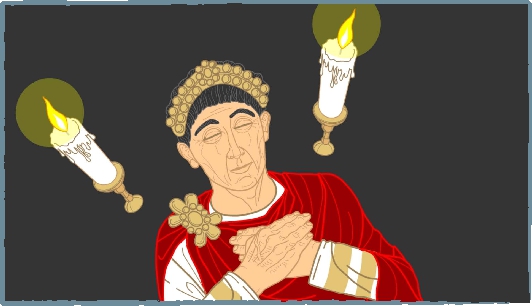 After his death, the Roman Empire...
After his death, the Roman Empire...
 ...was divided in two, but the Christian faith remained one.
...was divided in two, but the Christian faith remained one.